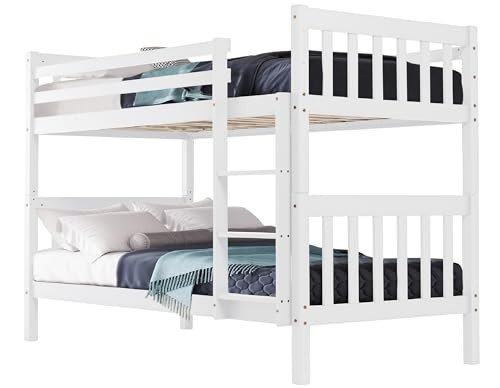With the increase of vertical living and smaller sized areas, the appeal of bunk beds has soared amongst families. Bunk beds not only provide a practical sleeping solution, especially in shared rooms, but they likewise bring an element of fun into a kid's life. This thorough guide looks into the functions, benefits, and factors to consider of kids' bunk beds, making it easier for parents to pick the best bed for their kids.
Bunk beds are flexible pieces of furnishings that serve more than a single purpose. Here are some key features to consider:
| Feature | Description |
|---|---|
| Product | Bunk beds can be built from wood, metal, or a mix of both, providing differing levels of sturdiness and style options. |
| Security Features | Many bunk beds come equipped with guardrails, secure ladders, and capped supports for safety, specifically important for children. |
| Design Variety | Choices range from traditional designs to modern-day designs, guaranteeing a match for any room décor. |
| Space-Efficiency | Bunk beds use vertical space, making them ideal for smaller rooms. |
| Convertible Options | Some designs can be converted into two different beds, supplying flexibility as children grow. |
| Storage Solutions | Some bunk beds include built-in storage drawers or racks, helping to keep the room organized. |
Purchasing a bunk bed comes with numerous benefits:
When choosing the best bunk bed for a kid, moms and dads need to consider different elements:
Bunk beds come in different designs and setups to suit different requirements:
| Type | Description |
|---|---|
| Requirement Bunk Bed | A timeless style with one bed stacked on top of another, typically using a ladder to access the leading bunk. |
| L-Shaped Bunk Bed | Functions 2 bunk beds connected in an L-shape, frequently more spacious and ideal for kids sharing a space but needing a bit more space. |
| Triple Bunk Bed | Comprises three stacked beds, ideal for making the most of sleeping plans in very minimal areas. |
| Loft Bed | A raised bed with space below that can function as a play area, study corner, or additional storage. |
| Futon Bunk Bed | Combines a bunk bed on the top with a futon or couch underneath, making it great for slumber parties and taking full advantage of space use. |
| Convertible Bunk Bed | Can be separated into two individual beds, providing versatility as children's requirements alter. |
Maintaining bunk beds is crucial for making sure longevity and security. Here are some basic care practices:
Q1: At what age can a child securely utilize a bunk bed?
A1: Generally, Kids Bunk Bed aged 6 and older are thought about safe to use the upper bunk due to the height and stability elements included.
Q2: Can I put a bunk bed near a window?
A2: It is a good idea to prevent placing a bunk bed near windows to reduce the risk of falling or injuries.
Q3: Are bunk beds safe for more youthful children?
A3: While some modern-day bunk beds include security functions accommodating more youthful children, it is usually recommended to wait up until they are older, usually over six years.
Q4: What is the normal weight limit for leading bunks?
A4: Weight limits differ by model but normally vary from 150 to 250 pounds. Always describe the manufacturer's specifications.

Q5: How typically should I inspect the bunk bed's safety features?
A5: It is recommended to perform a safety check every few months or whenever you see any indications of wear.
Kids' bunk beds serve as a strategic service for families aiming to take full advantage of space while supplying an enjoyable and appealing sleeping environment for their children. With a variety of options readily available-- from standard styles to loft beds-- moms and dads have the liberty to select something that fulfills their household's particular needs. By considering important elements such as security, room viability, and their children's choices, parents can make an educated choice, ensuring that each child is thrilled about bedtime while gaining from a well-organized room.
No Data Found!
